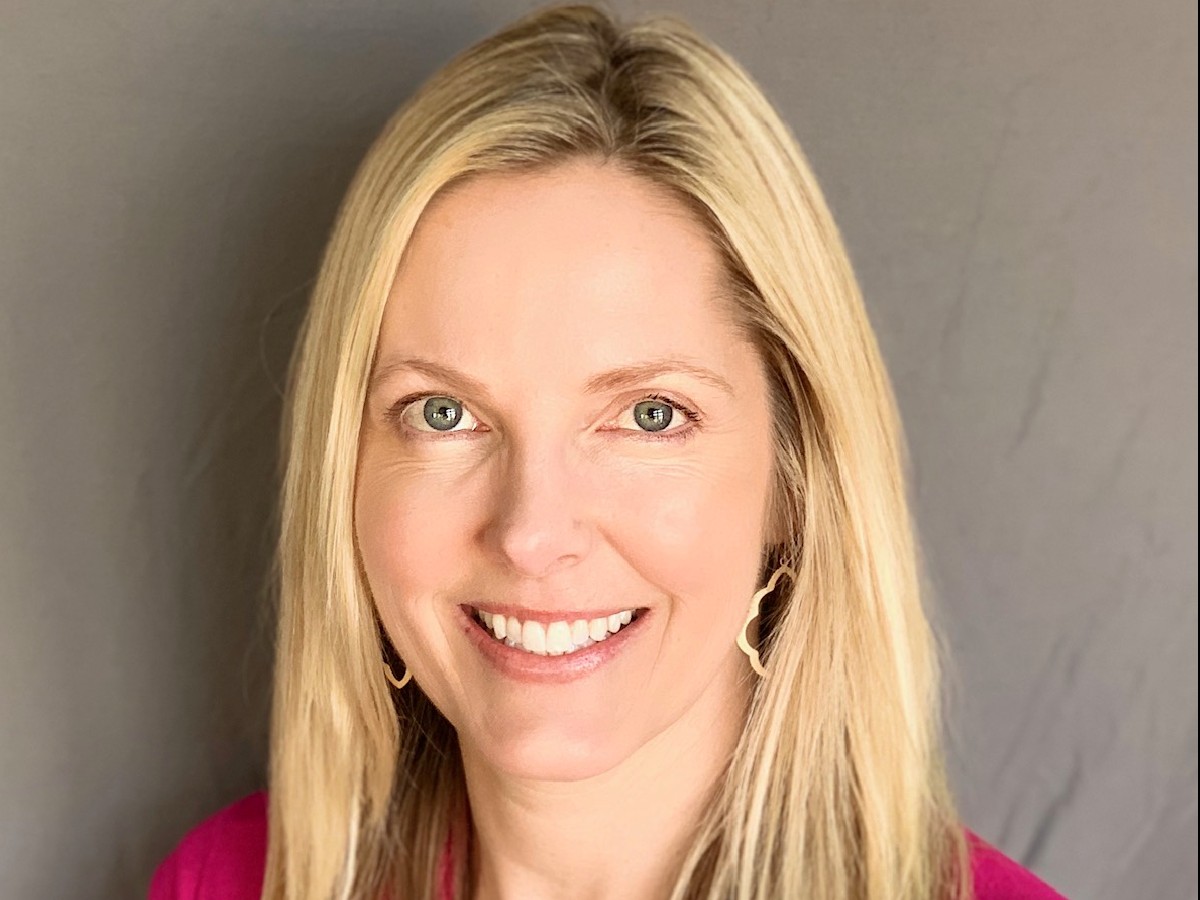Diana Nawrocki, a working mom with two young daughters, shares her personal breast cancer journey.
Diana Nawrocki’s breast cancer journey began twelve years ago, at the age of 32 when her daughter Elizabeth was three years old, and Annabelle was only one. While breast feeding, her first thought upon feeling a nodule in her breast, was that it might be a problem with the milk ducts, so she went in for an exam.
From breast exam to cancer treatment
The breast palpation and traditional handheld ultrasound (HHUS) exam done from her OB-GYN doctor confirmed a small lesion, but it didn’t look suspect or cloudy like a cancer normally would.
To be on the safe side, Diana’s doctor recommended a biopsy done by a breast imaging expert. While consulting the experts, they decided against the biopsy and removed the lump. When the surgery had been performed the physician thought it looked normal and told to wait for the results. But two days later Diana received a phone call with the life changing news that she had breast cancer.
Her journey involved going to Northwestern where her Stage 2 Breast cancer was treated by removing two lymph nodes - luckily there was no Lymphedema - followed by chemotherapy and radiation therapy.
After breast cancer: regular screening
In the monitoring phase Diana was getting a mammogram every six months and automated breast ultrasound (ABUS) only once a year. Now, 10 years post-survival, Diana is receiving both a mammogram and ABUS once a year, on the same day.
“I’m convinced that ABUS gives my doctor more concrete evidence than other technologies⁷ and provides a one-of-a-kind image,” says Nawrocki. “It’s completely painless, comfortable, fast, and convenient. Unlike handheld ultrasound, which is very time intensive, ABUS is faster--the appointment only takes 15 minutes.”
A comfortable exam
Enhanced patient care is an important consideration when creating a product for women’s health supporting cancer detection as comfortably as possible. Innovations like the Reverse Curve™ transducer developed on Invenia™ ABUS, is shaped to match a woman’s anatomy and applies uniform compression with selectable compression levels to the breast. A study¹ has shown evidence on the pain perception with much better values for the non-invasive and non-ionizing ABUS technology compared to mammography. The mean pain-level for mammography was rated with 6.41, where ABUS has been judged with 1.86. 100% of women who participated in this patient experience study¹ would recommend an ABUS exam to a friend.
|
71% |
|
|
of all cancer occurs in dense breasts.⁵ |
Exceptional screening needs for dense breasts
Over 40 percent of women have dense breast tissue,² one of the most common risk factors for developing breast cancer.³ In dense breasts, cancers may be masked on mammography, as both dense breast tissue and cancer appear white on a mammogram.⁴ This creates a dangerous camouflage effect and a dilemma for radiologists, as 71% of all cancer occurs in dense breasts.⁵ Additionally, women with dense breasts may be 4-6 times more likely to get breast cancer.⁶
The power of early detection
ABUS helps to find small cancers at an early stage when they are more treatable.⁷ When breast cancers are found at Stage 1 and 2, 70% of patients may avoid chemotherapy.⁸ Because Nawrocki has dense breasts, ABUS offers her greater peace of mind, because it has been specifically designed to find cancers in dense breasts and the entire breast is covered during the scan.⁷ For clinicians the 3D ABUS exam provides remarkable visualization to increase their clinical confidence, as they can access the entire breast tissue in multi-volume and multi-planar views in a comfortable way. Also reviewing the entire ultrasound scan in very complex breasts and calling for a second opinion is a great benefit, which typically would not have been possible before with other traditional ultrasound methods.
Raising awareness for women with dense breasts
Diana Nawrocki wishes that women were more aware about the issue of breast density and personal breast health. It is also important for referring physicians and general practitioners to educate about breast density and to talk about the risks associated with breast density.
“Why not start with proactive Ultrasound screening in the age of 30, just before the peak of breast cancer incidence?” asks Diana. “I want every woman to become a self-advocate and to take care of their breast health.”
EDUCATIONAL RESOURCES ABOUT BREAST DENSITY
Do you want to learn more about dense breasts? Medically sourced DenseBreast-info.org offers comprehensive educational resources for both women and Healthcare Professionals. A free on-demand CME/CE opportunity on the topic, Dense Breasts and Supplemental Screening, is also available.
REFERENCES
- Zintsmaster S, Morrison J, Sharman S, Shah BA. Journal of Diagnostic Medical Sonography. 2013;29(2):62-65.
- Pisano et al. NEJM 2005; 353: 1773.
- Engmann NJ, et al, JAMA Oncol. 2017;3(9):1228-1236.
- Kolb et al, Radiology, Oct 2002;225(1):165-75.
- Arora N, King TA, Jacks LM., Ann Surg Onc, 2010; 17:S211-18.
- Boyd NF et al. NEJM 2007; 356: 227-36.
- Wilczek B, Wilczek H, Rasouliyan L, Leifland K. European Journal of Radiology 10.1016/j.ejrad.2016.06.004
- Sparano, JA, et al. N Engl J Med 2018; 379:111-121

